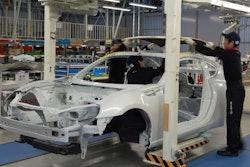Today, massive investments in manufacturing capacity for lithium ion battery production has outpaced relative demand, with industry incumbents and some new entrants fighting for market share and economies of scale. Where today’s demand lags, tomorrow’s industry growth is expected to catch up. Battery developers must keep pace to ensure access to a rapidly growing and dynamic opportunity, expected to surpass $50 Billion by 2024. On the other end of the spectrum, automakers are proceeding with caution, weighing risks on their investments in next-generation vehicle technologies. Even those with the largest resource pools can be capital constrained while considering investments across the most popular trends in mobility, including electrification.
Any new developments in battery chemistry face considerable barriers to market entry: (1) industry incumbents hold significant market share, (2) increasing regulatory requirements can be expensive to implement, (3) downward pressure on price threatens profitability, and (4) massive capital is obligatory to realize economies of scale. These forces have led to a relative commoditization of the lithium ion cell. Developers of novel chemistries must find a way to disrupt or otherwise work within this system. One such path towards commercialization is a focus on chemistries that can be compatible with existing infrastructure and capital equipment while realizing significant performance gains over incumbent technology at the final product.
Solid-state batteries have shown considerable promise for displacing lithium ion for applications such as electric vehicles, evidenced by the recent news and rumored developments from Toyota, BMW and Hyundai. However, not all solid-state chemistries lay a clear path to industrialization.
Contrasted with today’s lithium ion battery, consisting of two porous solids, electrochemically active layers (electrodes) separated by a polymer membrane, which serves as a separator to protect the cell from internal shorts, a solid-state bears some similarities. However, the lithium ion materials system is infused with a gel or liquid electrolyte to facilitate ion mobility between electrodes, where in a solid-state cell, the electrode layers are considerably denser and separated by a thin ceramic layer that serves as both separator and electrolyte. This solid-state cell configuration enables higher energy density than traditional lithium ion chemistries, as it can be paired with very high energy electrode materials, including lithium metal on the negative side. Additionally, solid-state cells containing inorganic ceramic electrolytes are inherently safer throughout charge and operation, as they contain no flammable electrolyte and have shown to be stable through a much wider temperature range. This high-temperature stability can substantially reduce costs of battery thermal management systems crucial to today’s lithium ion EV batteries. For solid-state battery hardware, cell form factor and design can be opened up to new conformations and packaging arrangements. This is because the cell package does not serve to contain the liquid electrolyte. Additionally, the cell stack can enable a more efficient bi-polar configuration.
For sulfide-based solid-state cell chemistries, notable manufacturing advantages can be realized, in particular when existing lithium ion infrastructure can be leveraged. When using traditional electrode materials (for example, NMC), the electrode layer can be produced using the same equipment currently running in lithium ion plants. Only the densification step will need to be tuned to meet the low porosity needed for a solid-state system. Additionally, for the lithium-sulfide based electrolyte materials, a tape-casting process can be utilized in the same manner as the electrode materials. Again, with densification tuned to produce a layer with low porosity and, as evidenced by recent research out of MIT, the right surface characteristics. While this is true of some inorganic solid-state chemistries, when comparing lithium-sulfide solid state materials, vs. the oxide or garnet-type electrolytes, no ultra-high-temperature sintering steps are required to produce the electrolyte-separator layer in the sulfide chemistries. In contrast to the inorganic chemistries, organic polymer based solid-state batteries can be both low cost and highly manufacturable using traditional extrusion processes, but have yet to realize the performance improvements over incumbent lithium ion technology to justify large-scale industrialization.
A notable final consideration in solid-state battery plant design: because sulfide-based materials are moisture-sensitive, the cell production process from slurry and materials handling through to cell assembly must be contained within a dry-room environment. Today, dry rooms exist in lithium ion production plants for cell assembly as the liquid electrolyte component is moisture sensitive. While it is inconsistent between manufacturers whether these controlled environments extend back through the coating operation, some newer high-capacity electrode materials are also sensitive to moisture and may drive wider adoption of upstream dry environment production in parallel.
The continued trajectory of lithium ion technology will serve consumer and automotive markets for several years still. However, the next-generation chemistries poised to realize performance and cost improvements in the most capital efficient manner will have the best chance for industrialization.
Doug Campbell is CEO of Solid Power.






















